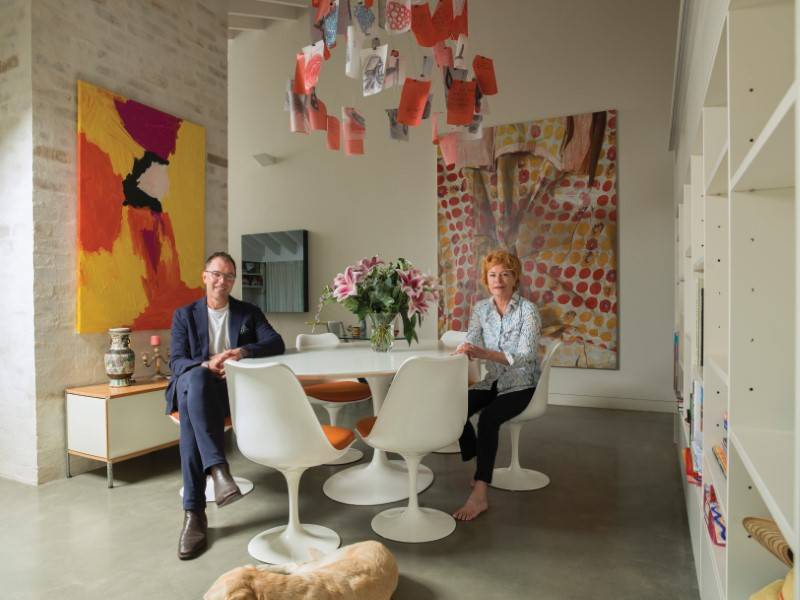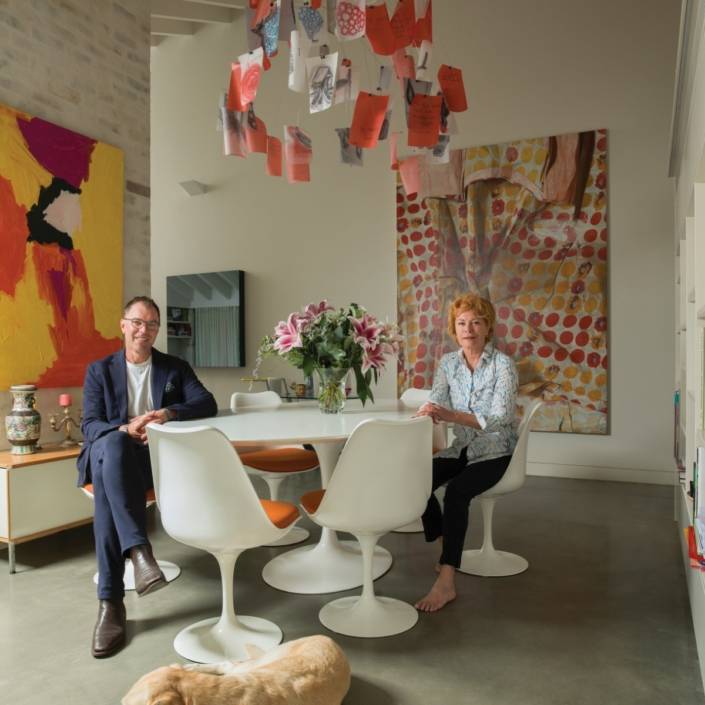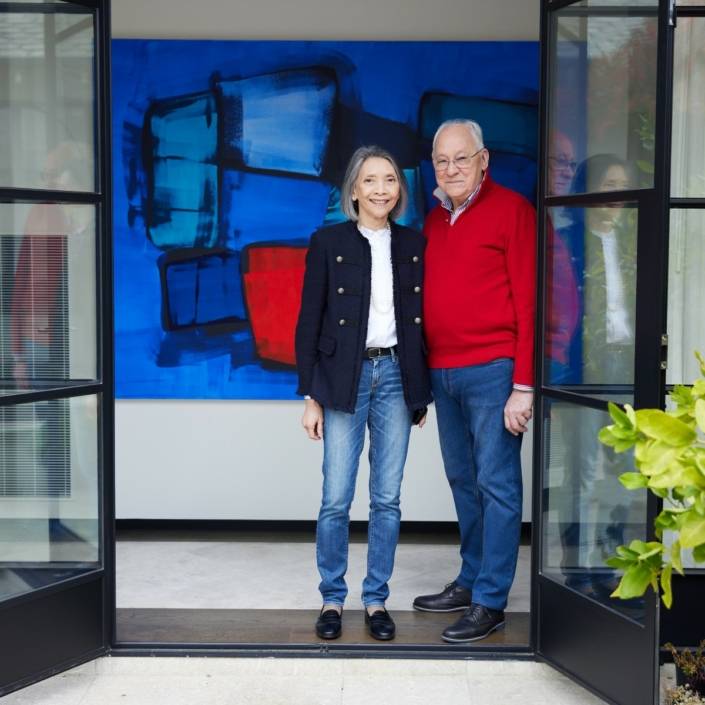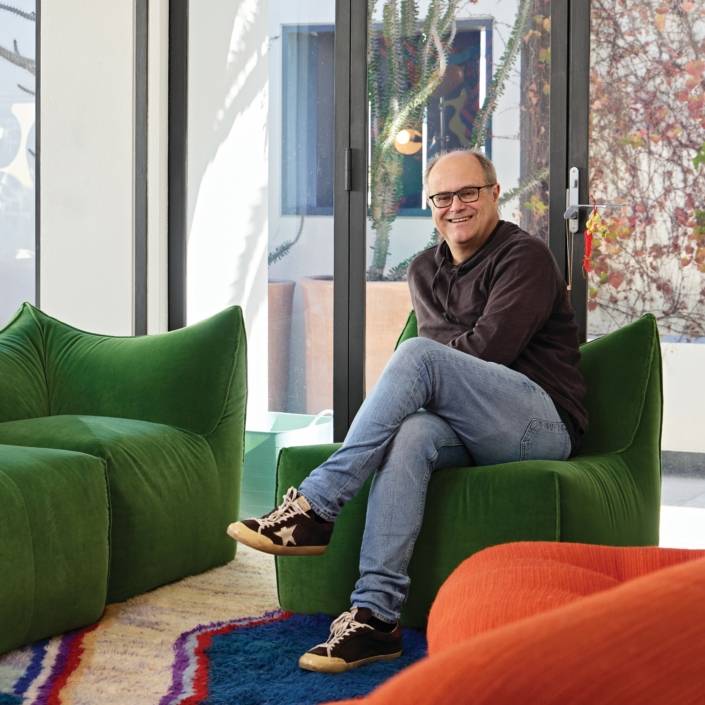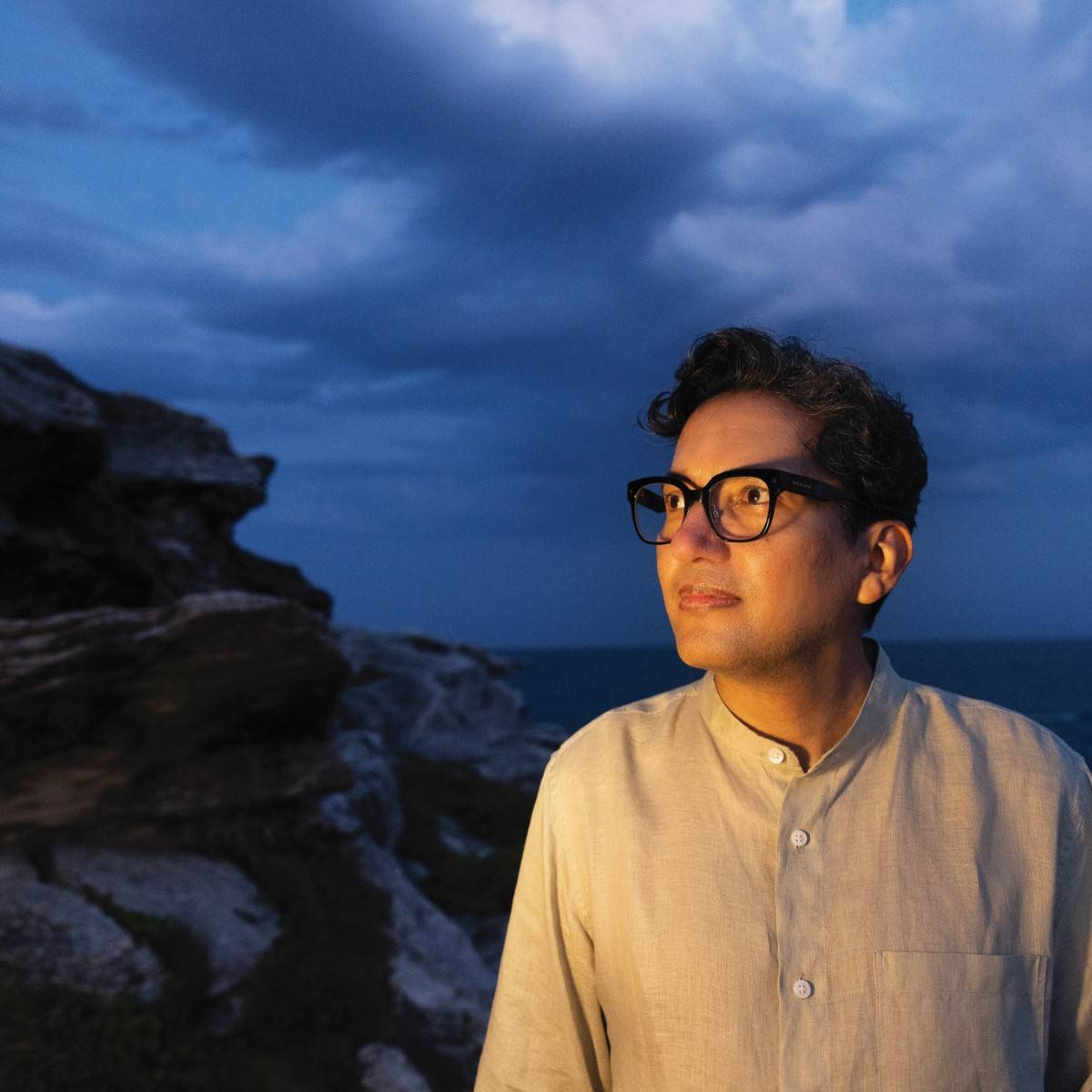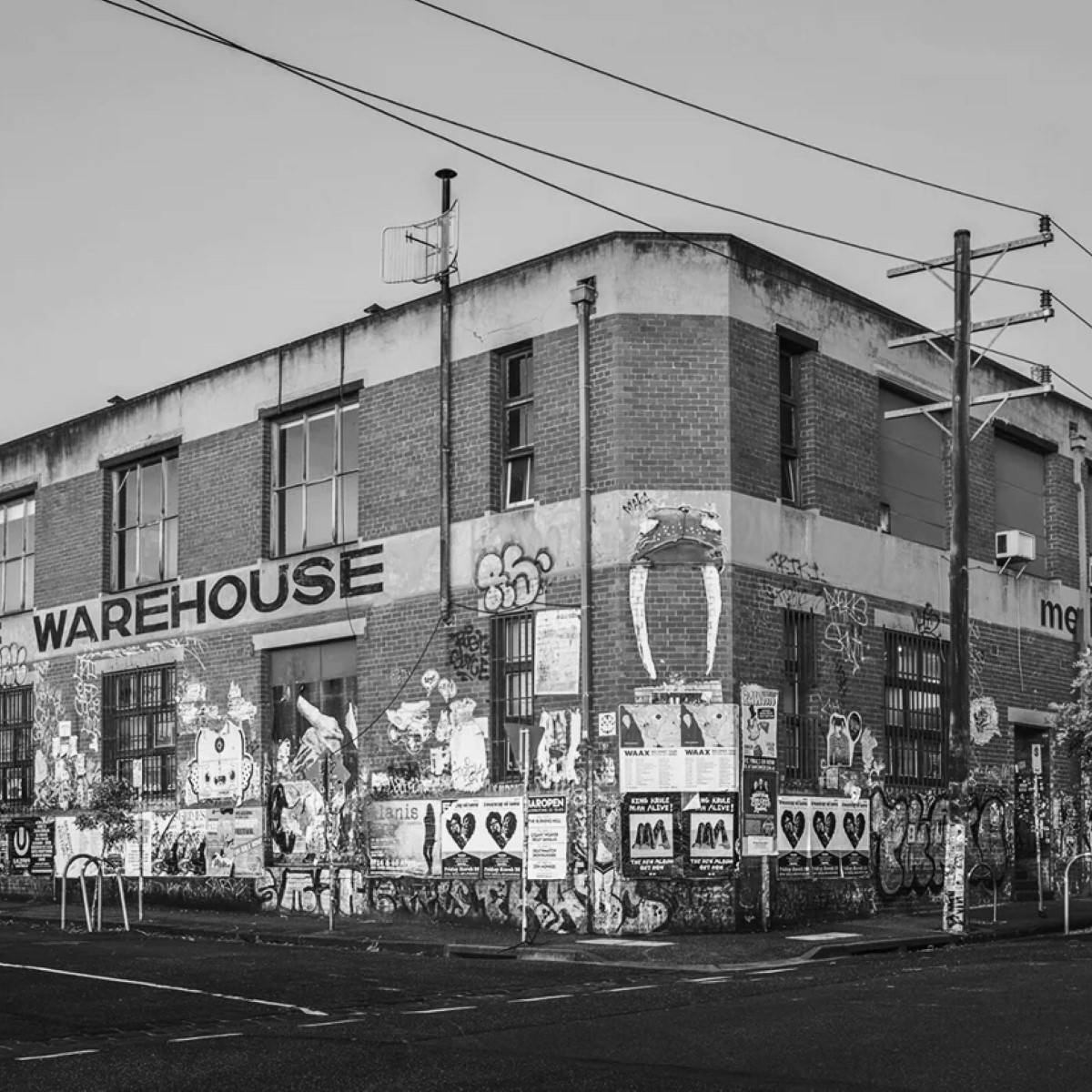Matthias Arndt: Everything Has Its Time
There is no rhyme or reason to the collection of high profile art world player Matthias Arndt. Each work is added impulsively, with the only criteria being that it has to be of exquisite quality and significance within the artist’s oeuvre.
Words: Duro Jovicic
Photography: Elke Meitzel
If, as Gerhard Richter proffers, “art is the highest form of hope”, such hope begins to reveal itself in Cape Schanck, on Victoria’s Mornington Peninsula, where Matthias Arndt’s residence and the Artbarn construction, designed by CHROFI architects, are located. Driving up, you see the soaring Artbarn perched prominent on a hill, its concrete-like render juxtaposed with the vivid red and delightfully quirky Modified Social Bench by Jeppe Hein in the foreground, and his whimsical Modified Street Light #07, twisting in and out of the ground like a slender serpent to the building’s side. It merely piques intrigue as to precisely what’s behind the doors of his abode, which is nestled in the valley below the Artbarn.
Arndt opened his first gallery in east Berlin in 1994, named Arndt & Partner, and it became the first of its kind to show international artists. In a matter of years, Arndt branched out by himself, and by 2009 had 40 employees with six galleries over five countries. Arndt’s impetus was not agenda-driven so much as about a desire to be immersed in art, and to help artists reach their goals and connect with collectors, corporates and renowned institutions. Arndt and his wife Tiffany have moved countries often, going where their burgeoning business dictates.
Arndt’s Mornington Peninsula house is built with art in mind. The main areas have white walls coupled with concrete flooring, allowing the art to breathe. There’s a distinctive Sally Gabori beside a table with applied swathes of yellow, orange and pink. A Del Kathryn Barton leans nonchalantly against a wall and another collage by her resides in the master bathroom, offset by a deep burgundy wall; a contrast that ensures it will pop into visual consciousness. Next to an expansive window, allowing in the rugged landscape, is a neon mirror box by Hein reading ‘LET GO’ as though a mantra of sorts.
It appears Arndt has the best of both worlds: an abode vividly showcasing his and his wife’s eclectic and refined art selections, and the Artbarn where he holds exhibitions. Of his collection, Arndt says, “we share it because we love it, and there are people that approach this very systematically and only collect in one area or medium. We do not set ourselves thematic or geographical restrictions. When we see a work, we don’t ask if it fits into what we already have, we look at if its convincing, exciting and impactful. Once you own a critical amount of artworks then you have to have a plan of how to manage the collection and make sure the artworks are not stashed away in storage but available to the public.” To illustrate that point, after acquiring a Gilbert and George piece, it toured various shows and museums for eight years before finally reaching his home.
In 2015 Arndt transformed his business into Arndt Art Agency, managing only a handful of artists. He wanted to focus more on an advisory service with museums, institutions, and bespoke collections utilising his extensive expertise. It enables Arndt to source works and broker deals, lend and donate to institutional collections, and be in a position to buy art himself. Arndt always took a disciplined approach, presenting his clients the best of the artist’s work rather than taking it for himself, knowing this was in the best interests of everyone involved. Now, having changed direction, there is less of a conflict of interest. I comment that his collection suggests an experienced and nuanced approach, wherein every piece appears strong and seminal. Arndt is quick to say, “I want to emphasise that when collecting and buying I can be as impulsive and spontaneous as any other collector can be. It is hard to explain why you absolutely have to own a specific work of art, other than it has to be of exquisite quality and significance within the artist’s oeuvre.”
The Arndt Collection has not gone unnoticed in the domestic art scene, with a recent show at the Shepparton Art Gallery (SAM) hosting part of Arndt’s trove, containing pieces from Barton, Zaachariaha Fielding and Ben Quilty seamlessly juxtaposed alongside works by Gilbert & George and the abrasive yet compelling mannequin by Thomas Hirschhorn named Nail-Antigone. The synergy of all these works together showcases how local talent sits comfortably in the company of some of the most renowned artists in the world. Arndt was the force behind international shows for both Barton and Quilty. The shows provided overseas exposure and a new market to the artists, while not interfering with their respective gallery representation domestically.
I first met Arndt at the opening of the SAM show, where he regaled us all with his effervescence, charm and insights into the artworks selected. Of the Gilbert & George piece, Union Dance, 2008, he said that after “ten years of establishing my reputation I realised everything has its time, that some things are worth the wait. I always wanted to do something with Gilbert & George. [Eventually]… I felt I could approach a number of major collectors and artists. I made sure, through [those] contacts [Gilbert & George] knew me and were willing to receive me. In 2006/07 I went to the place they live and work. My heart was racing… they are more than artists. It was so beautiful. At the end of the meeting George said, ‘you could have reached out earlier, and you didn’t have to ask Marvin [an American contact]. You know we are in the phone book!’”. Arndt later staged a sell-out exhibition of their work. His wife had urged him to buy a piece from the show, however there were none left. Once Gilbert & George found out that the piece he had wanted to buy was as a legacy piece for his son August, born in 2008, and given their enduring friendship, they opened their private collection to him, and a piece was procured.
I ask Arndt about his permanent base in Australia, and he was quick to correct me. They are here in part for his wife’s family, and for some stability in August’s high school years. As for the future, with homes in Athens and Berlin, Arndt doesn’t know what it entails as he will always need to travel internationally for work and inspiration for the collection. There’s no doubt, though, that the enticing pull of art will have him and his family seeking out and diving into another adventure abroad in due course.
Arndt is a member of the Asia Pacific Acquisition Committee of Tate and member of the Board of Trustees of the Foundation of the Art Gallery of New South Wales, Sydney.
This article was originally published in Art Collector issue 108, April-June 2024.
Featured image: Matthias Arndt with his wife Tiffany and works, from left: Mirdidingkingathi Juwarnda Sally Gabori, Dibirdibi Country, 2010; Jeppe Hein, LET GO (handwritten), 2019; Marina Cruz, Vermillion and Cadmium Yellow Polka Dots with Flowers, 2018. Photo: Elke Meitzel. Courtesy: the Arndt Foundation (Matthias Arndt).

